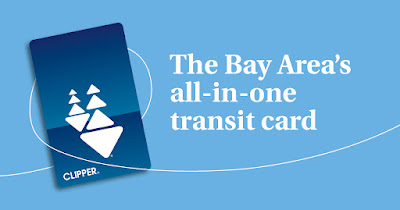I’d first like to start off with a message to those that use active transportation and transit to commute, by saying thank you. We see you and support you. We are providing year-round education and encouragement through Measure B funds. We have programs and policies that promote our community leaving their car at home and choosing to walk/bike/roll/ and take transit. This helps teach our residents safe walking and biking skills, reduces traffic and air pollution, and helps you get more physical activity.
I’d like to take you into my mind as a Gilroy City Council Member and show how we are able to shift to alternate modes of transportation by legislating policy. Last November the Gilroy City Council approved Royal Way Townhomes, a forty-five-unit townhome development near Gilroy High and the Uvas Creek Levee Trail. For the second time we approved that each new residence be given a $100 pre-loaded Clipper card. Clipper is the all-in-one transit card used for contactless fare payments throughout the San Francisco Bay Area. After the first year these Clipper cards will be auto-loaded annually by the HOA. The nearest VTA bus stops serving the development are Route 86 (Gavilan College/Downtown Gilroy) located at the intersection of Princevalle/Johnson, .17 miles east of the project site, Route 568 Rapid stops are located at Gilroy Transit Rail Station .85 miles northeast of the project and Route 121 Express Gilroy-Lockheed Martin at the Gilroy Transit Center. Additionally, the Gilroy Transit Center serves connections to Caltrain. Caltrain provides service from Gilroy to San Francisco (2-Hour Train Ride) Monday to Friday. Three trains leave the Downtown Gilroy Station at 5:54am · 6:31am · 6:52am. You can take your bike with you or park it at a locker at the Gilroy Transit Center. Caltrain currently serves riders from Gilroy to San Francisco and a future extension south to Salinas. This is just one way in which we will be reducing the vehicle miles traveled by cars from the development.
With its convenient location to transit, shopping, schools, and off-street bike/ped facilities there are few barriers to reducing VMT at Royal Way Townhomes. In our City’s General Plan 2040, we as a community called for bold actions that include providing high density housing options, affordable housing for all, and continuing to promote cleaner modes of transportation. We encourage existing and proposed development to incorporate Transportation Demand Management (TDM) measures such as car-sharing, transit passes, and unbundling of parking (requiring separate purchase or lease of a parking space) where such measures will result in a reduction in vehicle miles traveled, reduction of required amount of parking or an increase in the use of alternate transportation modes.
Gilroy’s multi-modal transportation infrastructure consists of buses, trains, bikes, scooters, and walking. While there might be portions of our city that are isolated from transit, there are many ways to continue to draw residents towards transit. Gilroy has a fully connected bike network and transit options. Many residents are employed outside of Gilroy, but we have a large population that work, attend school, and are retired in Gilroy. They benefit from local transit and rideshare. Gilroy has the vision that the glass is half full, and we have the ability to innovate and adapt to programs that will further reduce our VMT.
According to a public comment letter submitted for the Royal Way Townhomes Project, “Providing an incentive that rewards the effort of biking/walking/transit is important. Thank you for the mentioning of bike parking around the project, a new sidewalk enhancing the pedestrian experience around the site, and requiring a Transportation Improvement Fee in proportion to the project's share of transportation improvements needed to serve cumulative development within the City of Gilroy. The funds shall be used to fund improvements identified in the City Traffic Circulation Master Plan, which includes bikeways”, said Sean Reedy Community Organizer Gilroy Bicycle Pedestrian Advisory Committee (#GilroyBPAC)
My office and others will work with the HOA to develop a voluntary TDM Travel Behavior Change program for the residents. This would include monthly language in their communications to HOA members that promote the City of Gilroy work plans that focus on active transportation, current transit options, bike/walk infrastructure, bike/walk events, and safe routes to school. Including an annual presentation from our City’s Bicycle Pedestrian Commission. The City of Gilroy has work plans and incentive funding available through Santa Clara County’s Measure B Education & Encouragement Program.
We are actively advancing ideas and projects that promote the concept of free-range people in the City of Gilroy. We advocate for building and planning that considers future generations as well as current residents who don’t own cars. Advancing mobility options reflects what we are teaching the youth in our community through Safe Routes to School and why we are nationally recognized as a Bronze Bicycle Friendly Community from the League of American Bicyclists, as well as recognized by the World Health Organization as an Age-Friendly Community. The City of Gilroy is a Complete Streets and Recreation Destination community by resolution. If you haven’t taken the Gilroy Bike Pledge yet, you still can! See you on the road and I am proud to represent Gilroy on the Valley Transportation Authority (VTA) Policy Advisory Committee (PAC) in 2023.




